Conserving Land for Clean Water: the Broad River Basin
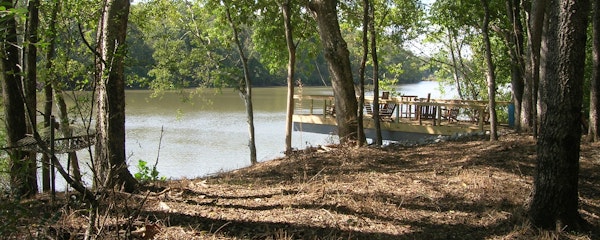
By Michelle Bizzell
The Palmetto Roost property is perched in a picturesque spot overlooking the Broad River north of Columbia. Pouring down from the mountains, the Broad river joins the Saluda to form the Congaree in Columbia, eventually meeting the Wateree river to flow to the ocean as the Santee River. For as long as there have been people traveling through and living in the area, they have relied on these rivers. Through the years, the Broad River has transformed the lives of the people on it and been transformed by the people who use it.
Before Fort Congaree was built in the early 1700’s, the Catawba and Cherokee nations both used the river, called by various names, including Eswa Huppeday, to trade goods, hunt, and fish. Canoes would paddle by, but the boat traffic would be slow. Standing on the bank you would see a free-flowing river, with no dams or diversions. No bridges had been built to criss-cross the river or highways that drone with the roar of traffic.
Standing there, 350 years ago, you could enjoy the breeze flowing through the pines and the loud knocking of woodpeckers. If you were very patient, you might spot a bald eagle soaring overhead or an otter splashing in the river. They feed on the abundant fish that call the river home. You too might catch a carp to enjoy for dinner. Over the next three and a half centuries, many aspects of this picture will change, but the beauty of this spot will remain.
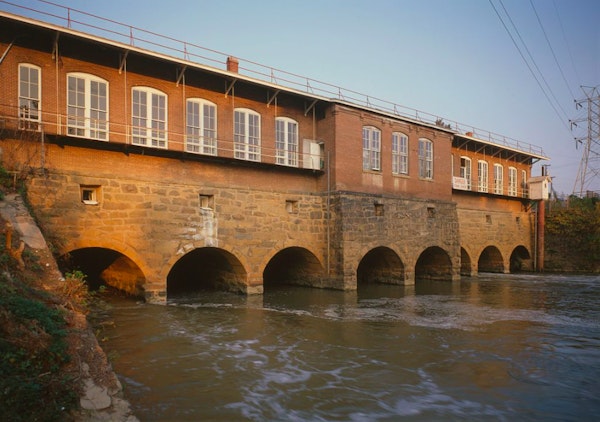
In 1786, Columbia was declared the state’s capital, bringing more people than ever to the Midlands. As settlements for the new residents started to spring up, the river remained at the heart of growth. It was from the river that people drew clean water to drink, bathe, and wash. Farms and plantations also continued to be established in the rich soils of the Midlands, bringing both free and enslaved people to work.
Cotton was the main cash crop after the invention of the cotton gin in 1793, and it was the river that allowed it to be transported to market. Starting with the building of the Columbia canal in 1824, over 30,000 bales of cotton were shipped along the river annually to Charleston in the first half of the 19th century.
But eventually, technology caught up to the rivers. The railroad reached South Carolina in 1847, and within a few years, shipping in the canal had ebbed. But Columbia was booming with a new industry, ripe to use the river in a new way. Textile mills, some of the largest in the country, sprouted in Columbia in the second half of the 19th century. To power these mills, the canal and its accompanying dam were converted to a source of hydroelectricity.
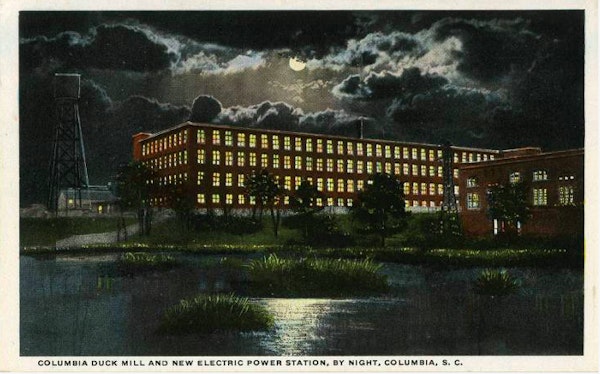
Farms, mills, dams, all of these changed the river as well. Fish that once swam freely through the river were now blocked by the dams. As people moved into the cities, sewers and storm drains were needed to control the water and waste. Eventually, the rivers became polluted with sewage and copper. Forests were cleared for development and agriculture. While the surrounding area exploded with possibility, the river was taking a beating.
Palmetto Roost, along with a few other natural places along the Broad River still hung on. These places, free from development, were preserved. Working together with the landowners, Congaree Land Trust was able to ensure there would always be space for nature on the Broad River. And so, as the pollution in the river was cleaned and the fish allowed to swim freely again, places like Palmetto Roost provided refuges for wildlife that started to return. The trees that had grown on the land for centuries held back the soil and prevented erosion. Plants grew that filtered the water that ran into the river and became so many people’s drinking water.
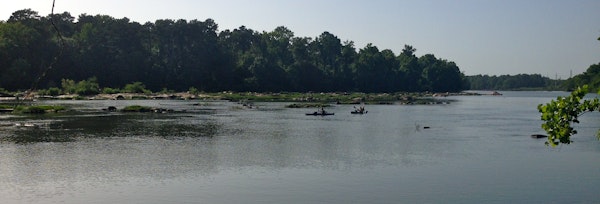
Now, once again, standing on the banks of the Broad River you can hear bird calls and watch canoes paddle by. Plenty of what you see would be strange to someone from the past: Goldendoodles riding in kayaks, stand up paddleboards, you snapping a picture on your phone, but the echoes of history will be all around you. You stand in the shade of pine trees that have grown for hundreds of years, listening to the same birds singing. You might still get lucky and see a bald eagle, or catch a smallmouth bass out on the river.
CLT has protected over 1500 acres in the Broad River Basin, working with landowners across eight private properties. Conserving these lands in the Basin improves our waters and enriches the natural history of our state. By preserving these natural places, Congaree Land Trust is ensuring that not only will one picturesque spot remain on the river, but they are helping to maintain the health of the whole system.
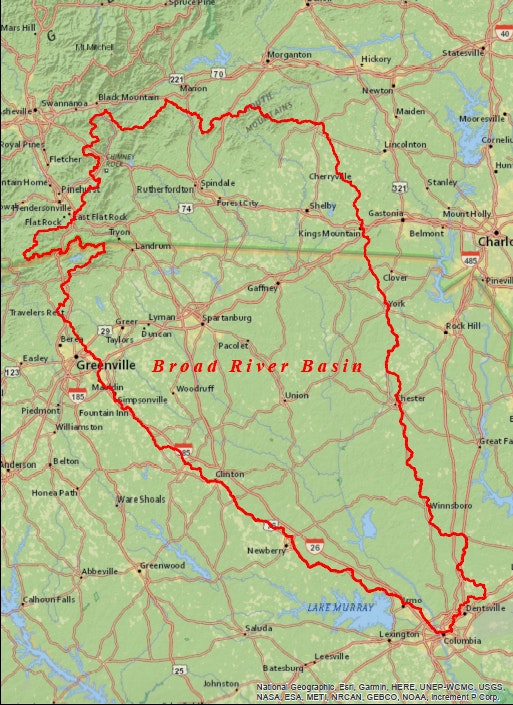
Sources Consulted:
https://www.columbiasc.net/about-columbia\
http://www.scencyclopedia.org/sce/entries/agriculture/
http://www.congareeriverkeeper.org/river-front-history

